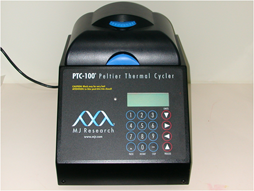
Molecular Diagnostics explores cells, their characteristics, parts, and chemical processes, and pays special attention to how molecules control a cell’s activities and growth. Molecular Diagnostics is the study of biology at a molecular level. The field overlaps with other areas of biology and chemistry, particularly genetics and biochemistry. Molecular Diagnostics chiefly concerns itself with understanding the interactions between the various systems of a cell, including the interactions between DNA, RNA and protein biosynthesis as well as learning how these interactions are regulated.
Broadly speaking, biochemistry looks at the function of proteins within the body, genetics looks at how genes are inherited and propagated, and Molecular Diagnostics looks at the process of replication, transcription and translation of genes. Molecular Diagnostics has some surface similarities with computer science, because genes can be looked at as a discrete code, though the proteins they code for and their subsequent interactions can be highly nonlinear.

PCR involves amplification of short fragments of DNA driven by reciprocally oriented primers driven by enzyme taq polymerase.
Applications include:

In Molecular Diagnostics, real-time polymerase chain reaction, also called quantitative real time polymerase chain reaction is a laboratory technique based on the PCR, which is used to amplify and simultaneously quantify a targeted DNA molecule. It enables quantification of target sequences like Hepatitis B virions in a DNA sample.
The procedure follows the general principle of polymerase chain reaction; its key feature is that the amplified DNA is detected as the reaction progresses in real time, a new approach compared to standard PCR, where the product of the reaction is detected at its end.
Applications include:
Dhruv is accredited by the NABH for HLA typing and Cross Matching. Performs HLA sequence-based typing in compliance with the ISO/AS 15089:2007 standard for Laboratory testing.This is currently the only facility in Vidarbha region. The accreditation demonstrates that the Institute has implemented good laboratory practices which provide collaborators with a high level of confidence in the validity and accuracy of results generated by the Institute. The Quality Management System at Dhruv is comprised of managerial and technical requirements to ensure that standards are met. The lab also promotes cadaveric organ transplant program.
Influenza A (H1N1) virus is the subtype of influenza A virus that was the most common cause of human influenza (flu) in 2009, and is associated with the 1918 outbreak known as the Spanish Flu.
It is an orthomyxovirus that contains the glycoproteins haemagglutinin and neuraminidase. For this reason, they are described as H1N1, H1N2 etc. depending on the type of H or N antigens they express with metabolic synergy. Haemagglutinin causes red blood cells to clump together and binds the virus to the infected cell. Neuraminidase is a type of glycoside hydrolase enzyme which helps to move the virus particles through the infected cell and assist in budding from the host cells.